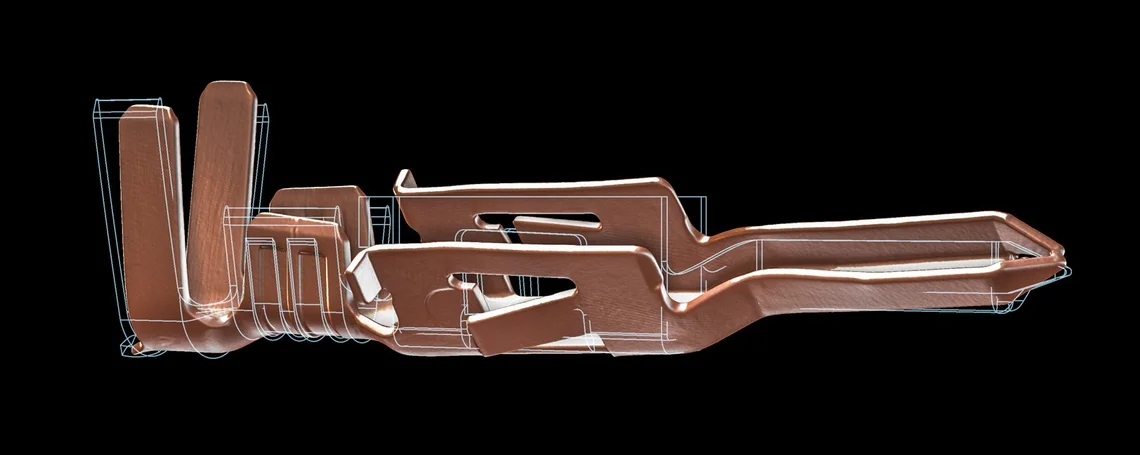The Basics
Metrology tasks often require creating a measurement plan on CAD data, which is usually based on provided specifications (like in a drawing) or importing measurements with PMI. The measurement plan can be applied to the actual object in hopes that the fit points will find the right places and geometry elements will be created.
In other words, we often create measurement templates and hope they work.
We can do that right now! Let's create a measurement plan on a crimp connector.
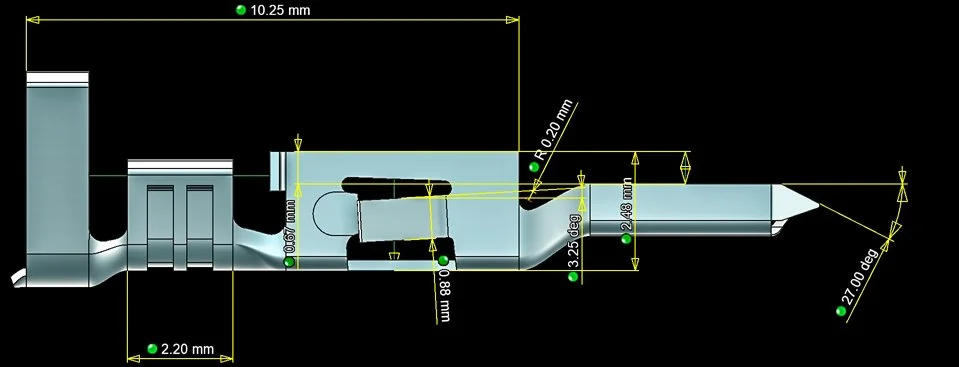

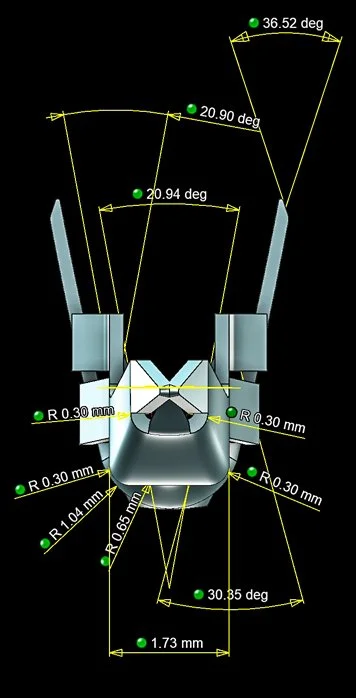
A measurement plan on the CAD data of a crimp connector, from different angles
And now the caveat: this method is ideal for when we are dealing with... well, ideal parts, as deviations fall within a reasonable range. When we copy/paste the measurement plan to such ideal parts, fit points will automatically find the right places to land and the right geometry elements will be created. Measuring data is easy in an ideal world.
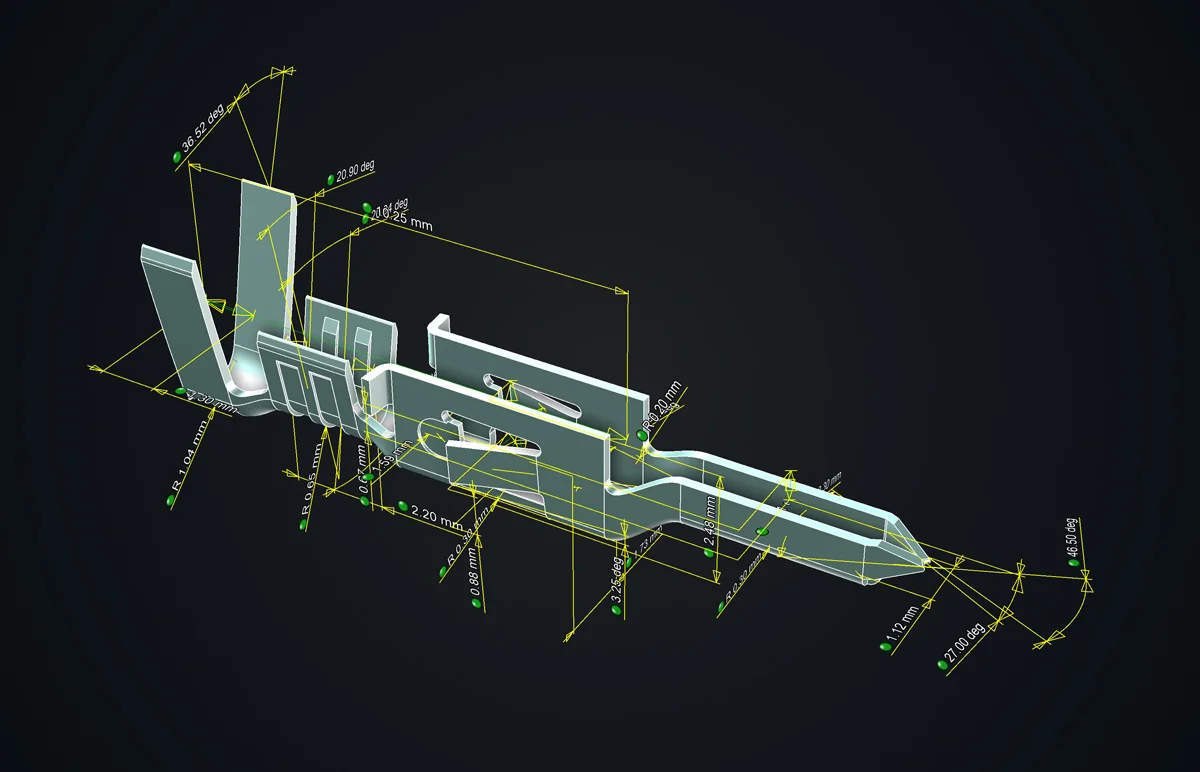

Measurement plan on CAD vs. ideal part. Every measurement is in place
In a not-so-ideal setting, such as in a heavily distorted part, it's not so simple. Sometimes, there isn't even a surface to land on, and we're left with the highly scientific, metrology-based equivalent of: gibberish. It becomes a hassle to measure distorted parts.
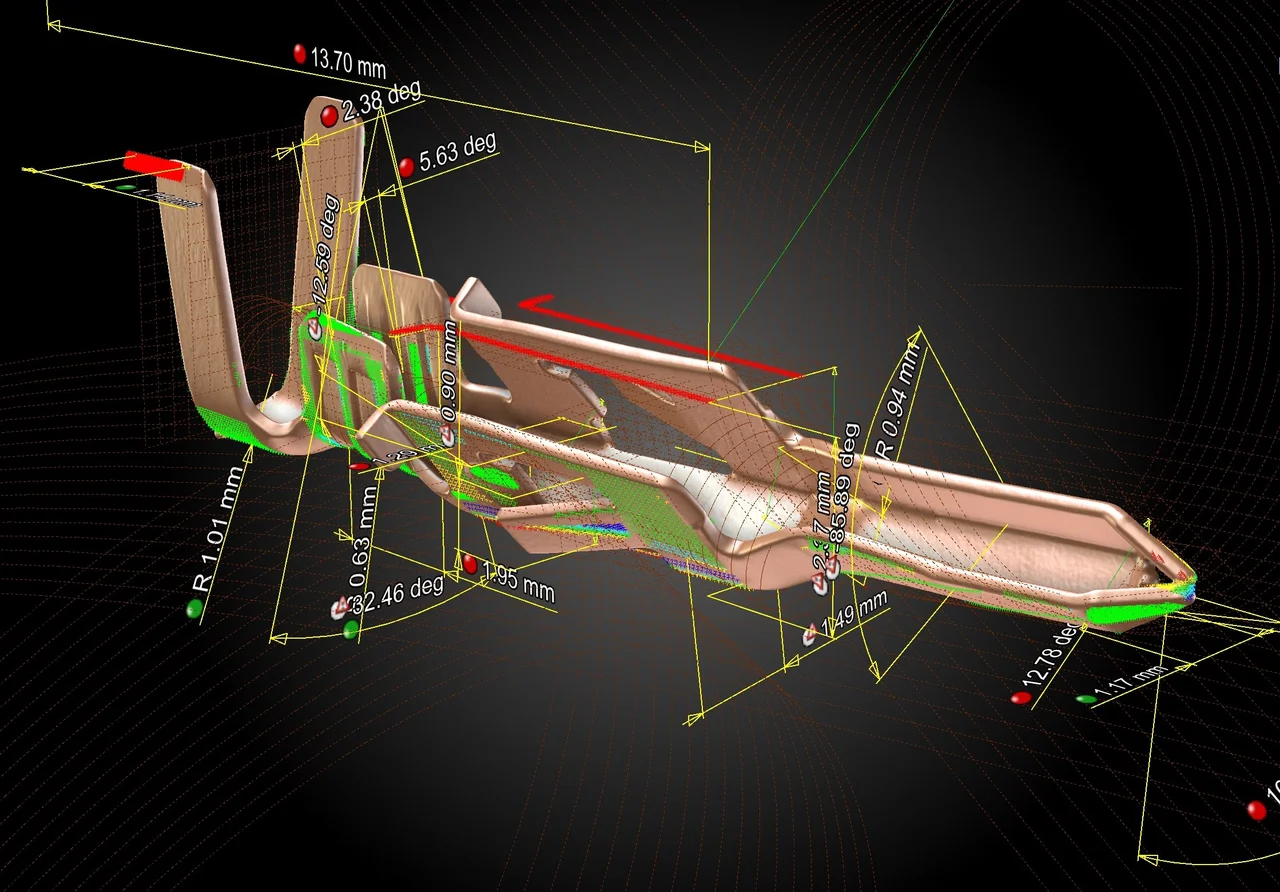
Measurement plan on distorted part. A lot of geometry elements couldn't find their places, causing broken measurements
If only we had a better solution...
Introducing adaptive measurement templates!
VG Solution: Adaptive Measurement Templates
Adaptive measurement templates were introduced in version 2022.1 of VGSTUDIO MAX. Just like the mesh compensation module, they calculate and consider deformations compared to the nominal object. (Incidentally, we can use existing mesh compensation results instead!)
Just tick the "adaptive transformation" checkbox in the "transformation" tab and make sure the correct source object is selected when you paste the template to your actual object.
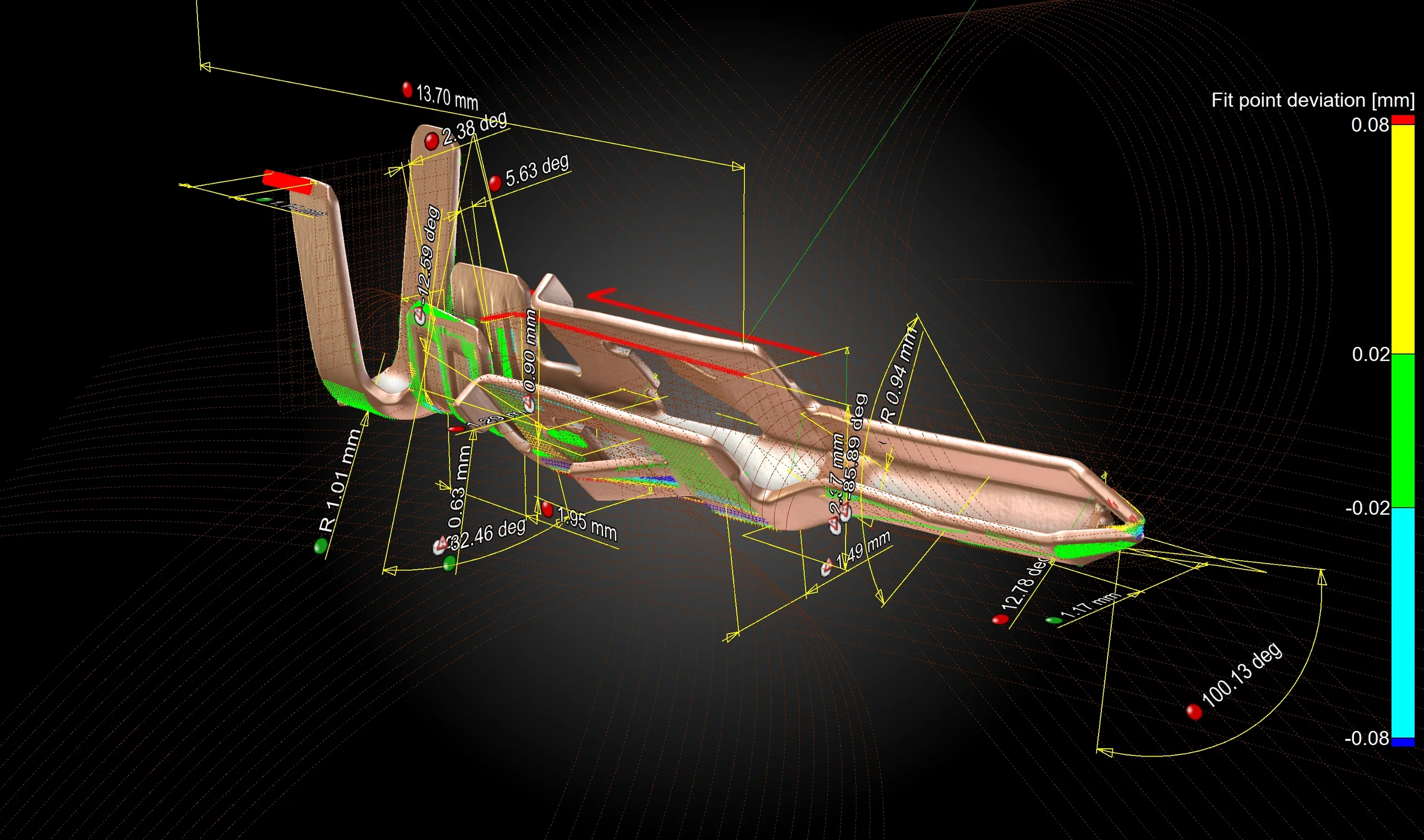
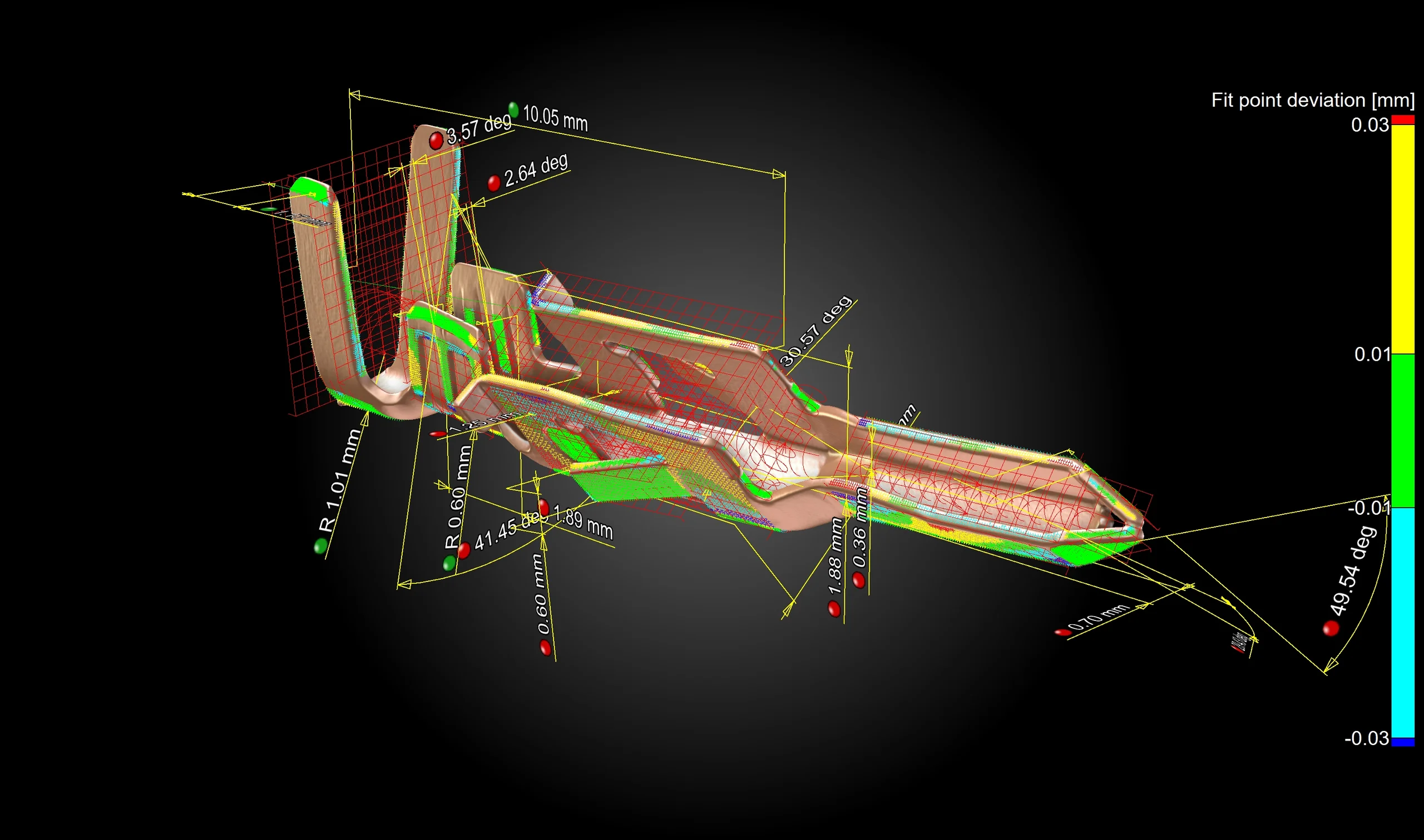
Measurement plan on a heavily distorted part with vs. without adaptive transformation
With adaptive measurement templates, fit point creation will take into account the size and direction of distortions and fit geometry elements accordingly, without a hitch… or in this case, without a glitch.
* The part has been heavily distorted for dramatic purposes. If we can make adaptive measurement templates work here, they can work anywhere!
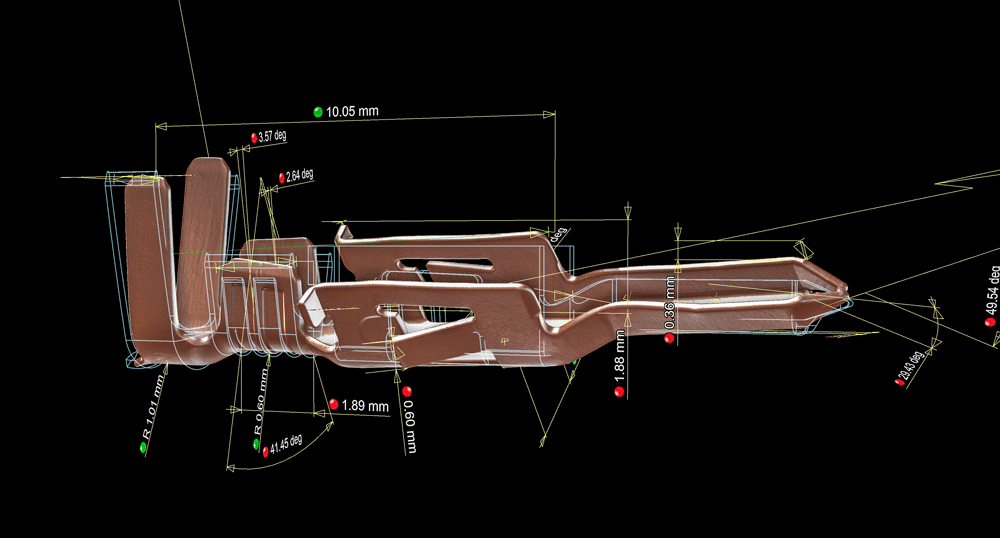
Comparing an ideal vs. (heavily) distorted part. Honestly, if your crimps come out of production like the latter, you've got roughly 99 problems... but measurements ain't one
Ready to Learn More?
Users of VGSTUDIO MAX can find out more about geometry elements, measurement templates, and adaptive measurement templates in the tutorials included in the software.
Got a Story?
If you have a VG Story to tell, let us know! Contact our Storyteller Team at: storytellers@volumegraphics.com. We look forward to hearing from you.
